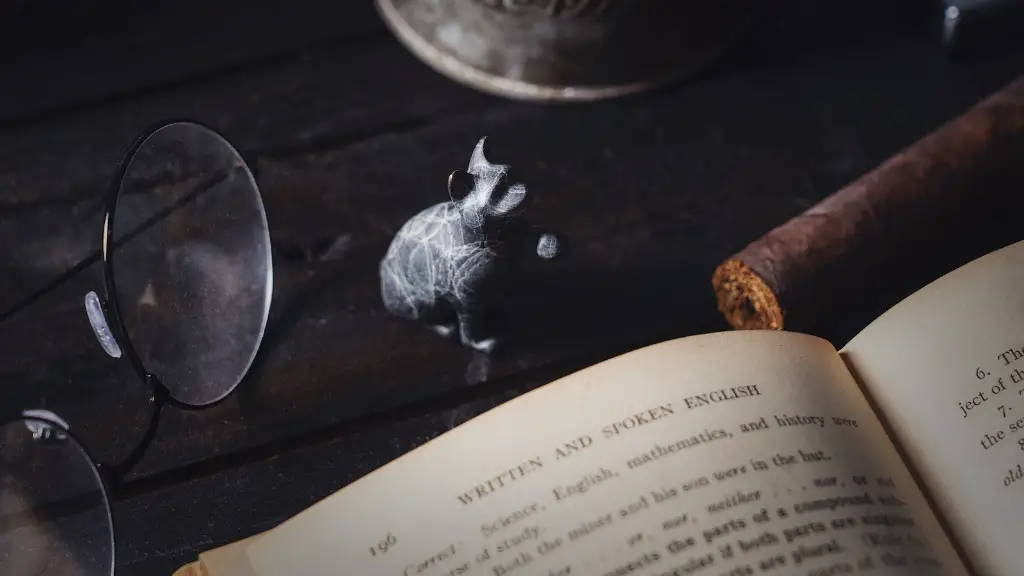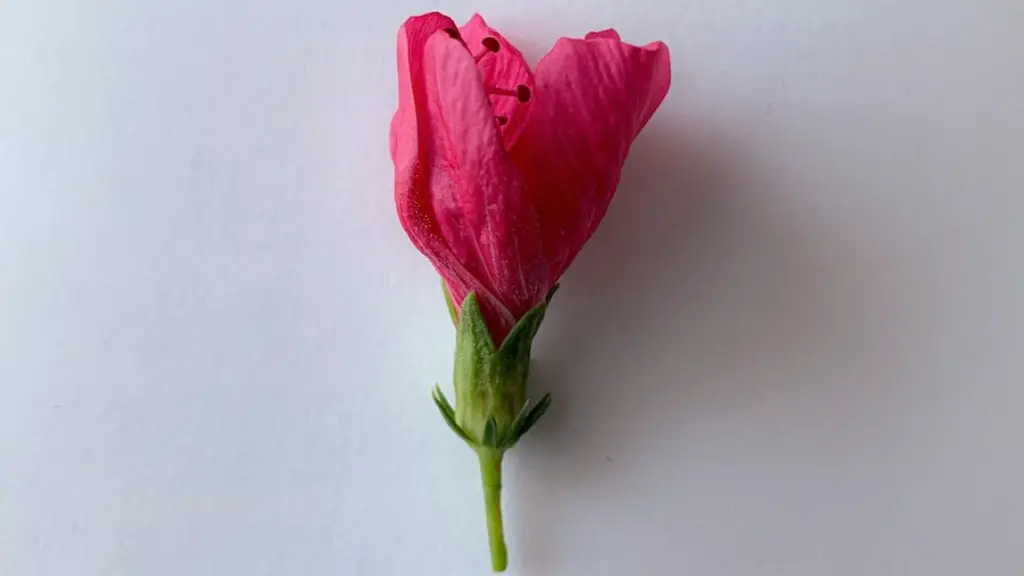Is Rapping Poetry?
Rapping is undeniably an art form. However, when it comes to classifying it within the broader category of ‘poetry’, opinions differ noticeably. While some experts might point to the fact that rappers use a distinct kind of language and share common themes with conventional poetry, critics might say that due to a number of differences, rap does not meet the traditional definition of poetry.
Firstly, it is widely debated whether to consider the lyrical content alone when discussing the genre’s relationship to poetry or whether to include the accompanying musical elements as well. Typically, the form of rapping consists of the rap artist speaking over the beat. While poem-makers usually rely on the creative power of their lines and rhymes to express themselves, rappers make use of their vocal melody and dynamics to emphasize their message.
Poetry often carries a certain structure. A strict line count will be needed for identity of the poem; likewise a certain rhyme scheme or alliteration tend to be present. On the other hand, rapping is not subjected to a structured form and it may vary in length. Rappers articulate their delivery in different ways and have a wider range of verbal expression.
Due to its flexibility, rap has become a platform for exchange of opinions and views. Artistic messages are formed with the flow and rhythm of the words contributed by the artist which form a flow backed by a melodic beat. This combination of expressive flows and beats can bring together poetic elements and underlying emotions in the lines that create a powerful connection with the listener.
Ultimately, rappers have the right to determine how their work should be labeled. Although some might disagree, the integration of musical elements and a loose approach to structure might be seen as an advantage that allows for more diverse lyrical content. Through a powerful performance, rappers are free to express feelings and ideas. They often touch on socio-political issues and also make use of metaphors to convey their messages. So, the answer might be to accept and embrace the fluid boundaries of rap as a genre and a form of art street poetry and just ignore the traditional definitions.
Detailed Analysis
The difference between rap and poetry can be analyzed in a detailed manner. When examining traditional poetry, a major emphasis is placed on symbols and imagery. Oftentimes, poetry tells stories and expresses concepts in an abstract way. On the contrary, rap is known for its directness, as it typically deals with topics related to real-world issues such as politics and social issues. Rappers often present the message in an uncomplicated way with the use of plain language.
Another clear contrast with poetry is the introduction of music. Poems usually just have their words and rhymes, whereas, with rap, a variety of beats and instrumentals accompany the words to emphasize the sentiment. The melodies, rhythms and vibe created help to give a rapper’s words more impact.
When it comes to the technical aspect, traditional poetry is known for its adherence to certain rules and conventions such as the line count and rhyme scheme; but with rapping, there is more freedom. This can be seen as a unique possibility for the rap artist to represent their own distinct style.
Moreover, rap is known for its ability to connect with its audience in a profound and personal way. The musicality and lyrical dexterity of rap can bring people together and bring about an emotive response that can be powerful and inspiring. Through rap, people can share their stories, struggles and emotions and make a connection with each other.
Educational Perspective
From an educational point of view, rap is becoming increasingly accepted as a way to support learning. It has become popular as a way to teach poetry, as it can help to build language skills, inspire confidence and creativity in young people. Furthermore, rap offers an inspiring and interactive way of conveying ideas and values, conveying the message by combining word association and melodies. This can be especially helpful in aiding understanding, since with the combination of music, it opens the door to a variety of different perspectives and interpretations.
In the past, rap has been dismissed as a less sophisticated art form but today, more and more people recognize rap as an excellent source for education, as it encourages comprehension and application of ideas. It helps to engage young people and break down traditional boundaries of teaching.
Social Perception
Rap has become a huge part of the current pop culture and is a powerful voice in society. Recognized as a genre connected to black culture and American heritage, it has steadily grown into a global phenomenon.
In the past, rap was heavily associated with negative stigma and connotations, but today, there is a more positive outlook and greater appreciation towards the artform. It has become a platform for a variety of messages and conversations and is frequently used to document important social issues. Rap serves to both highlight inequalities and break down stereotypes and it has allowed many people to express their opinions on issues that matter to them.
Rap has been an avenue of discussion for a number of topics, and it has been made available to everyone due to its popularity. Nowadays, it can be seen as a positive outlet through which society is able to communicate and motivate people to stand up for their rights and rights of others.
Business Scope
The business aspect of rap has boomed in recent years and it has become a profitable industry. Hip hop artists are no strangers to sponsorship deals, product endorsements and marketing campaigns that leverage their presence to help big brands.
From the mainstream music industry to street culture, rap has become a major entity, bringing in millions of dollars every year. Merchandise, media and music are all major contributions to the income of the industry, while the potential growth of virtual concerts and streaming platforms has never been greater.
Rapping has been harnessed as a form of self-expression and has been used as a revenue stream in various ways, from selling mixtapes to setting up businesses. The growing popularity of rap has allowed artists to journey into entrepreneurship which has provided advantageous opportunities for the independent hip-hop industry.
Global Appeal
The influences of rapping has extended all around the world, as nations have continued to discover and adopt it into many forms of art. It is famous for being entrenched in musical diversity and hip hop artists are utilizing the global platform to produce a wide range of sounds, merging both time-honored values with contemporary styles.
Through rap, the music industry has created many bridges between cultures, with many hybrid and multi-national styles appearing. For instance, it is common to see Japanese hip-hop artists collaborating with African rhythms and beats and Middle Eastern hip-hop artists incorporating Spanish influences into their tracks.
This international collaboration has enabled the genre to have a much wider reach and modern rap continues to remain popular today, across all geographical areas.
Disruptive Nature
Another characteristic of rap is its disruptive nature. It has the power to challenge and change the norms of the traditional music industry. Thanks to the rapid growth of the internet, rappers have been able to build their own presence on digital platforms and acquire a wide audience that can be measured in the numbers of downloads and streams.
This increased access has disrupted traditional hierarchies and has allowed independent rap to gain a foothold in the field. It has become popular for artists to leave corporate labels and manage their own careers, broadening their fanbase and also providing an opportunity to reach a remote audience.
Moreover, the internet has also opened up a dialogue for rappers to engage with their fans and interact with them online, further strengthening their influence and status as role models. Social media has given them more control and enabled them to own their narrative and brand.
Political Influences
Rap has taken part in the political sphere, with many calling it a ‘protest music’. Rappers have spoken out and promoted strong values, sharing opinions on current affairs and using their platform to call attention to issues that need to be discussed.
This can serve to influence people to think deeply about the issues raised and it has motivated marches, demonstrations and greater involvement in political actions. Rappers are unafraid to go against the general opinion and share difficult truths that can often be hard to confront.
Many believe that rap has been able to bring about social change, by amplifying voices and helping to spark conversations. In light of this, rappers are seen as strong influencers and many have used their platform to lead movements, rally support and advocate for particular causes.


